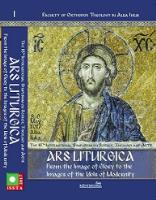The Studite anthropology in the missionary context of iconology
The Studite anthropology in the missionary context of iconology
Author(s): Mihai HimcinschiSubject(s): Christian Theology and Religion, Anthropology, Theology and Religion
Published by: Facultatea de Teologie Ortodoxă Alba Iulia
Keywords: iconography; mission; anthropology; grace; deification; dialogue; image; idol; ecumenism;monasticism;
Summary/Abstract: Mankind has wanted, from the beginning of times, to free the human face completely from any materiality, to be like God (Genesis 3:5). This desire is fulfilled completely through Incarnation, when the Son of God, born Human, succeeded to give to the humanity an inner strength capable of transforming the face made from dust, so the divine created and uncreated energies can rest inside it. According to the Orthodox anthropology, the face of God in the human being is rebuilt, changed and transformed in God in grace. The novelty of the present study resides first in the fact that offers, for the first time in the Romanian Orthodox missionary theology, an iconic synthesis based on an anthropological missionary fundament, placing the work of Saint Theodor the Studite (759-826) in the centre of the scientific research. Secondly, our analysis is contemporary, appealing, and interesting because it fortifies the iconological mission of the Orthodox Church in the contemporary society and places on a level of axiological equality The Word of God, meaning the Gospel, and the Image/Icon, meaning His divine-human Face, a perspective that is absolutely odd for the Protestant world, even after 500 years after the Reform from 1517. The study opens the door for a possible inter-confessional dialogue on the theme of the divine theophanies.
Journal: Altarul Reîntregirii
- Issue Year: XXII/2017
- Issue No: Suppl_1
- Page Range: 33-46
- Page Count: 14
- Language: English

